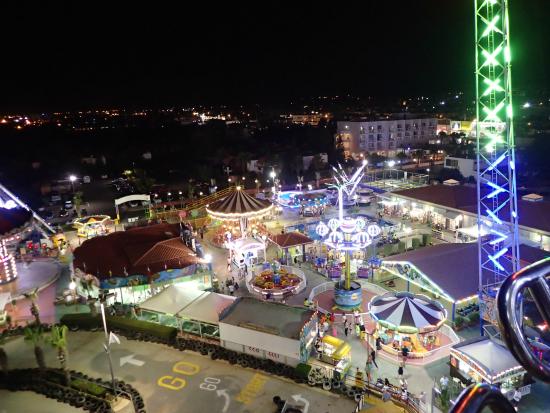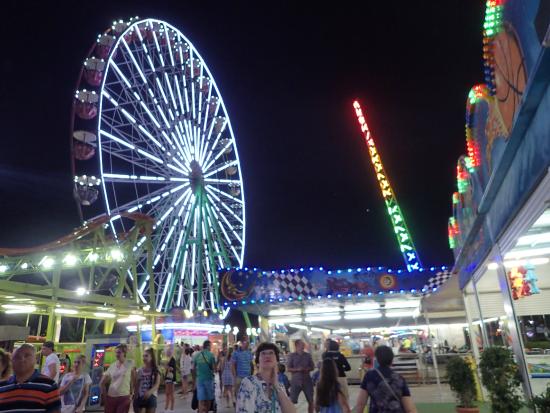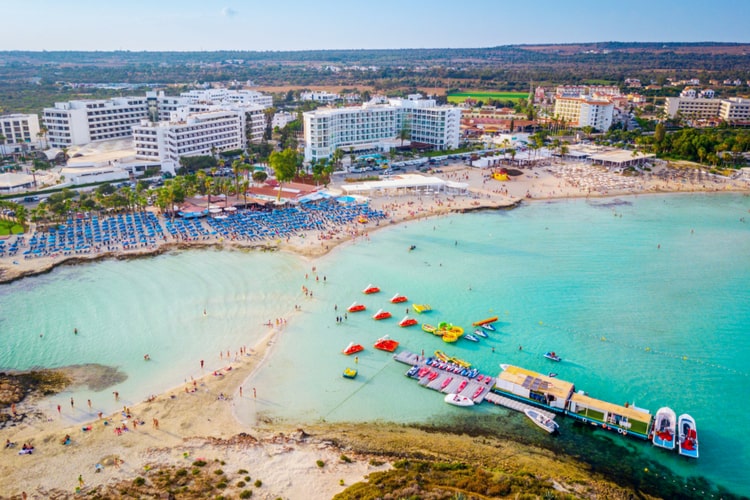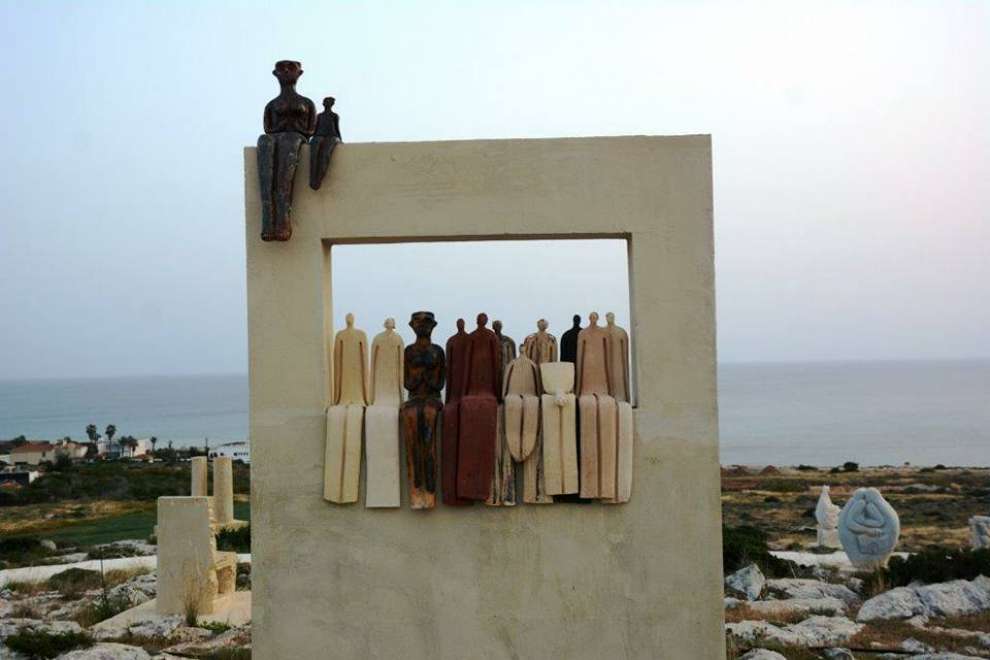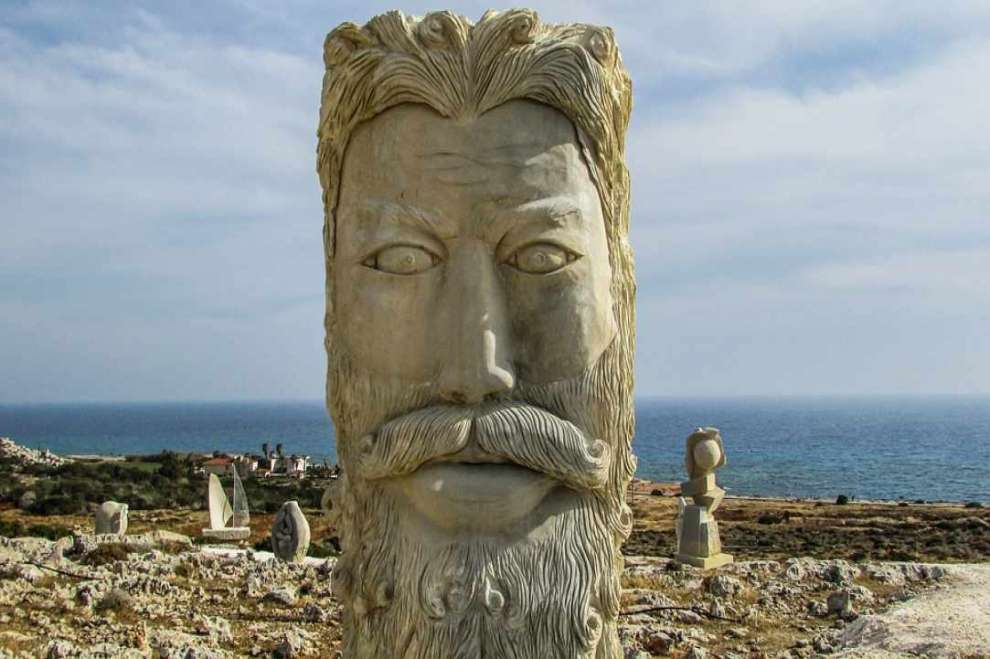EXCURSIONS
Excursions
FULL-DAY EXCURSION – LIMASSOL & PAPHOS
Kourion Ancient Theatre & Archaeological Site
The mount of Kourion, on which the ancient city-kingdom developed, occupies a dominant position on the coast 4 km southwest of the village of Episkopi in the Lemesos district. The earliest evidence of settlement in the broader area of Kourion dates to the Neolithic period (4500-3900 B.C.), whilst the most ancient remains in the area of the ancient city itself are connected with settlements and tombs of the Middle and Late Bronze Age. According to tradition Kourion was founded by Argives in the 13th century BC, during the first wave of the Mycenaean expansion and others followed the Argives in the 12th century as a result of the Dorian invasion of Greece. Systematic excavations were undertaken in 1933 by the Pennsylvania University Museum, and continued, with a break during the war years, until 1954. During the excavations the building of the Achilles Mosaic, the Theatre, the Baths and the Complex of Eustolios, the Stadium and the Sanctuary of Apollon Hylates came to light (during 1980-1983 the excavation of this site was undertaken by the American Mission of the Walters Art Gallery and the Universities of Missouri and Maryland) . In 1974-1979 the American Mission of the Dumbarton Oaks Centre for Byzantine Studies carried out excavations in the Early Christian Basilica of Kourion. At the same time (from 1964 until today) the Department of Antiquities of Cyprus excavated the Agora, the House of Gladiators, the Small Basilica next to the Stadium and the newly discovered Coastal Basilica.The Theatre
It was originally built in the 2nd century B.C. but what is preserved today dates to the Roman period with 2nd and 3rd century A.D. additions and restorations. In the curved auditorium the spectatorsʼ seating area accommodates around 3500 people. The stage only preserves its foundations but it originally rose to the full height of the auditorium. Today the theatre is used for cultural events.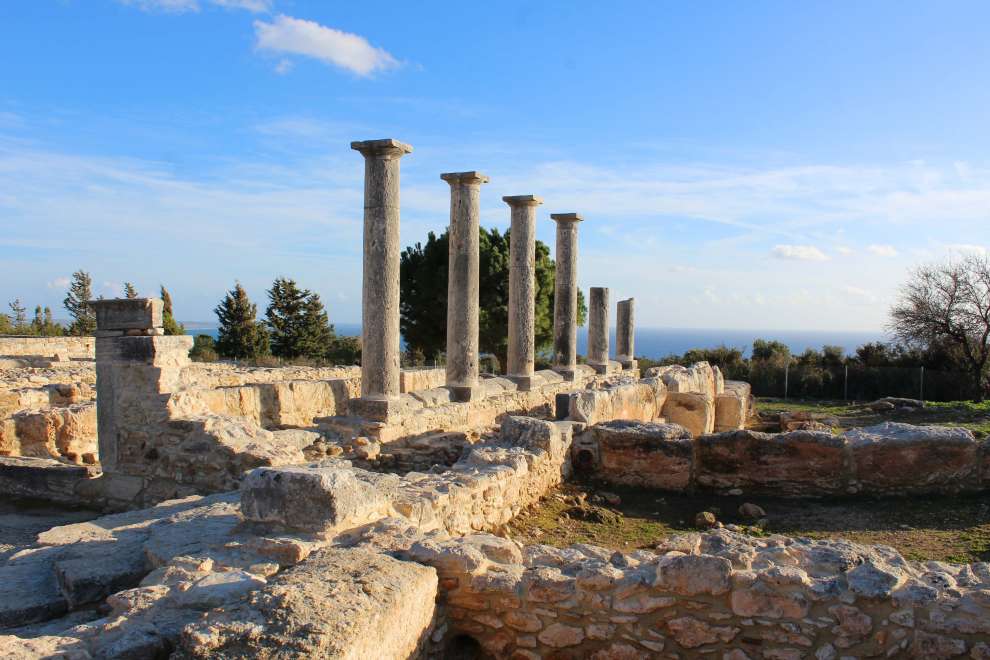
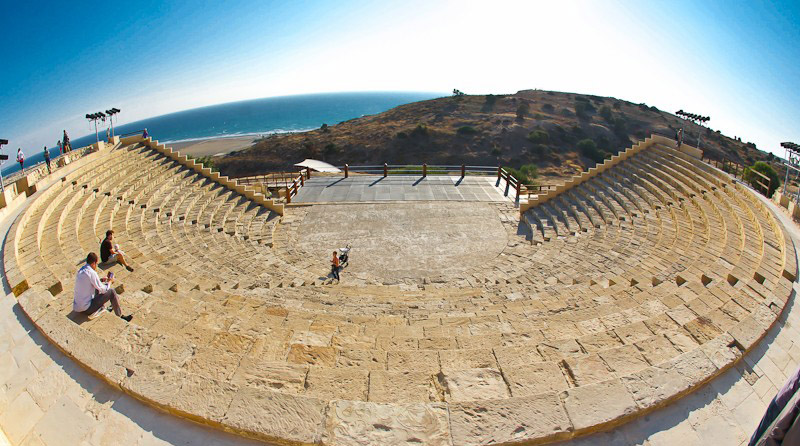
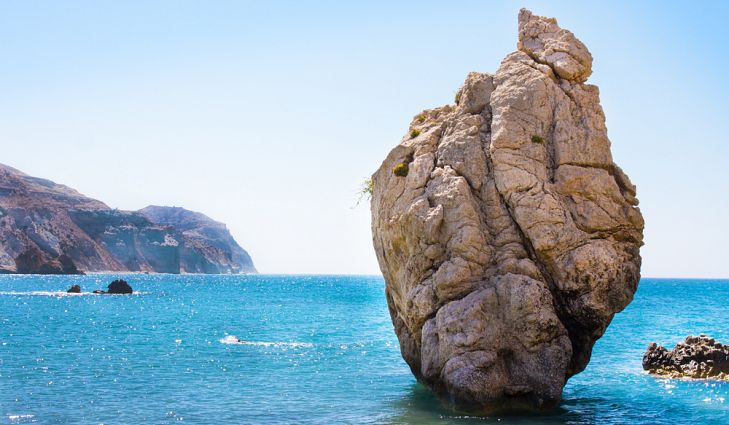
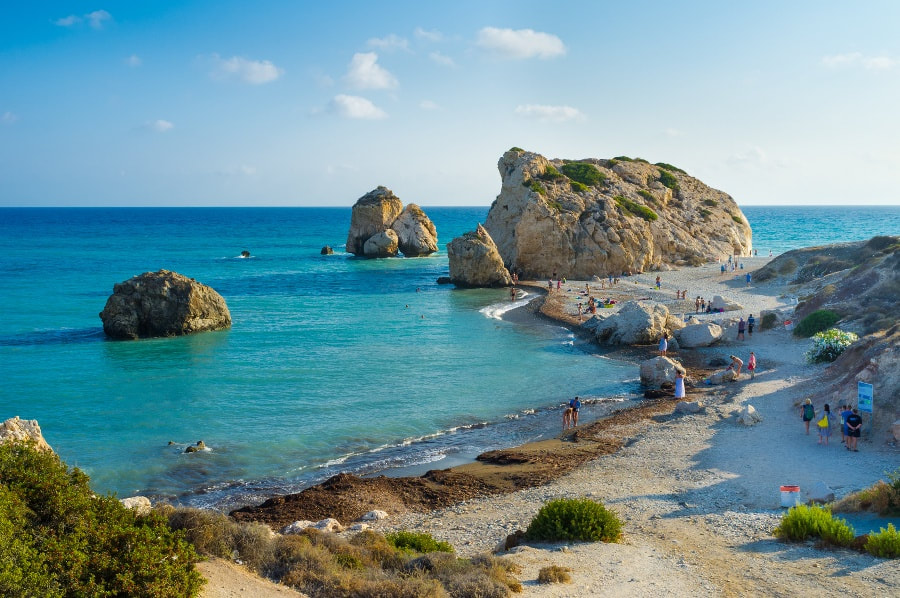
Petra tou Romiou (Aphrodite’s Rock – Aphrodite’s Birthplace)
Petra tou Romiou Petra tou Romiou, a rock off the shore along the main road from Paphos to Limassol, has been regarded since ancient times as the birthplace of Aphrodite, goddes of love and fertility. According to ancient tradition, Aphrodite was born from the waves on the site off the coast of Cyprus. In his Theogony (178-206), Hesiod provides the following dramatic account of the event: “Chronos took the great, long, jagged sickle; eagerly he harvested his father’s (Zeus’) genitals and threw them all off behind. The genitals…were carried for a long time on the waves. White foam surrounded the immortal flesh, and in it grew a girl…her name is Aphrodite among men and gods, because she grew up in the foam (aphrizo). Aphrodite was then escorted ashore on a shell by the soft breezes of the Zephyrs at the rocks known as Petra tou Romiou. This myth is, of course, most memorably depicted in Botticelli’s Birth of Venus (on display in the Uffizi Gallery in Florence). A much older rendering of the event can be seen in a fine mural at Pompeii. Homer’s account of Aphrodite’s birth is less dramatic. He said she was the daughter of Zeus and the fresh water nymph Dione, at whose bosom he would sometimes seek solace (Iliad 5.370-417). Petra tou Romiou means “the Rock of the Greek” and does not refer to Aphrodite but to another myth, that of the Byzantine hero Dighenis who threw the rocks at pirates to protect his lady. It is said that in certain weather conditions, the waves rise, break and form a column of water that dissolves into a pillar of foam. With imagination, this looks for just a moment like an ephemeral, evanescent human shape. There is a long narrow pebbly beach at Petra tou Romiou that extends to either side of the largest rock and its satellites.Tombs of the Kings
The ‘Tombs of the Kings’ is the splendid necropolis that is located just outside the walls, to the north and east of Pafos town. It was built during the Hellenistic period (3rd century B.C.) to satisfy the needs of the newly founded Nea Paphos. Its name is not connected with the burial of kings, as the royal institution was abolished in 312 B.C., but rather with the impressive character of its burial monuments. The ‘Tombs of the Kings’ was the place where higher administrative officers and distinguished Ptolemaic personalities as well as the members of their families were buried. The necropolis was continuously used as a burial area during the Hellenistic and Roman periods (3rd century B.C.-beginning of 4th century A.D.). There is sufficient evidence to indcate that the first Christians also used the site for their burials, while at the same time the site constituted an endless quarry. Squatters established themselves in some of the tombs during the Medieval period and made alterations to the original architecture. The existence of the site was already known (from the end of the 19th century) by Cesnola, who severely looted the tombs. In 1915-16 the then curator of the Cyprus Museum, Markides, excavated some shaft tombs, while the honorary curator of Paphos Museum, Loizos Philippou, started clearance work in a few other tombs in 1937. But it was in 1977 that systematic excavations were undertaken by the Department of Antiquities, which brought to light eight large tomb complexes. Most of the tombs are characterised by an underground, open-aired, peristyled rectangular atrium completely carved into the natural rock. Columns or pillars of the Doric style supported the porticoes, which surrounded the atrium. The burial chambers and the loculi for single burials were dug into the portico walls. It seems that the walls were originally covered with frescoes, although today only small fragments are preserved. The tombs’ architectural characteristics directly relate them to Hellenistic prototypes from Alexandria, Delos, Pergamon and Priene.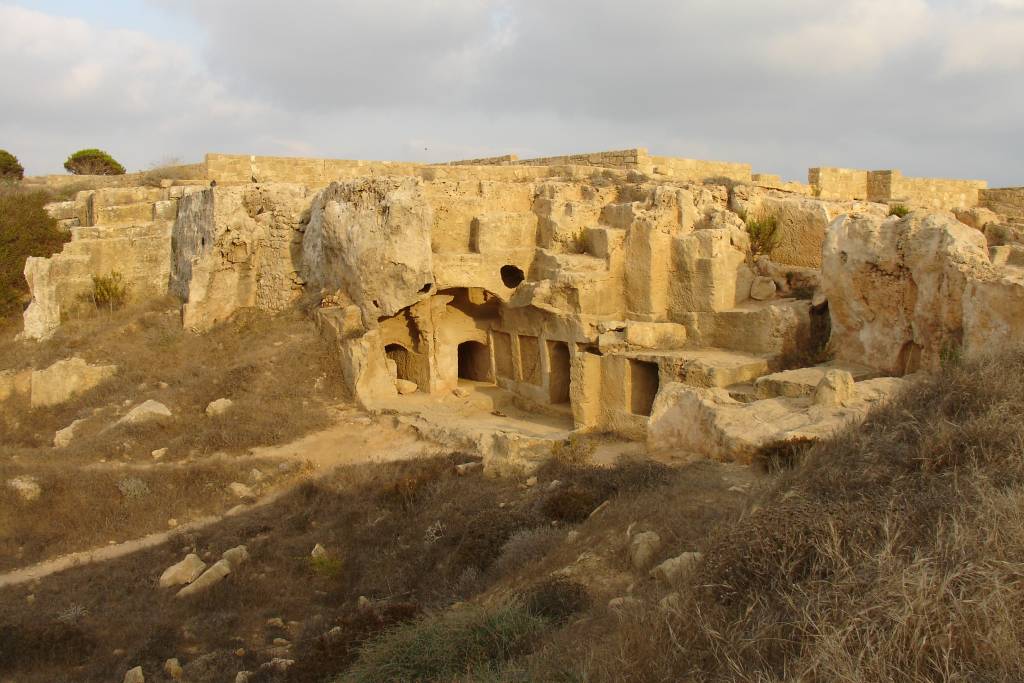
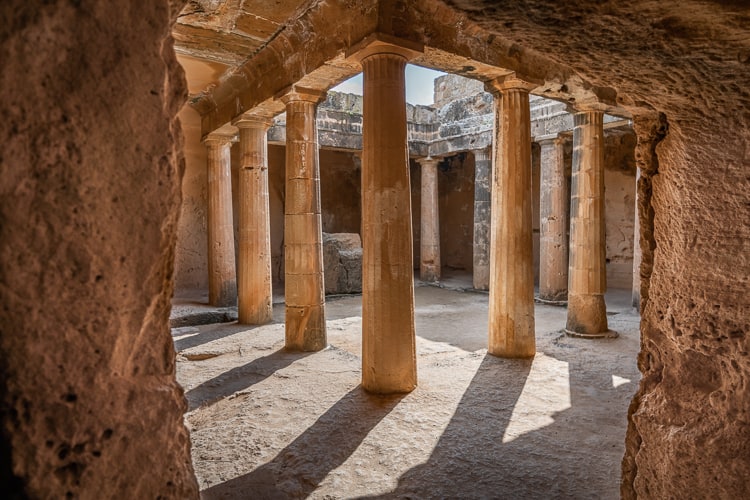
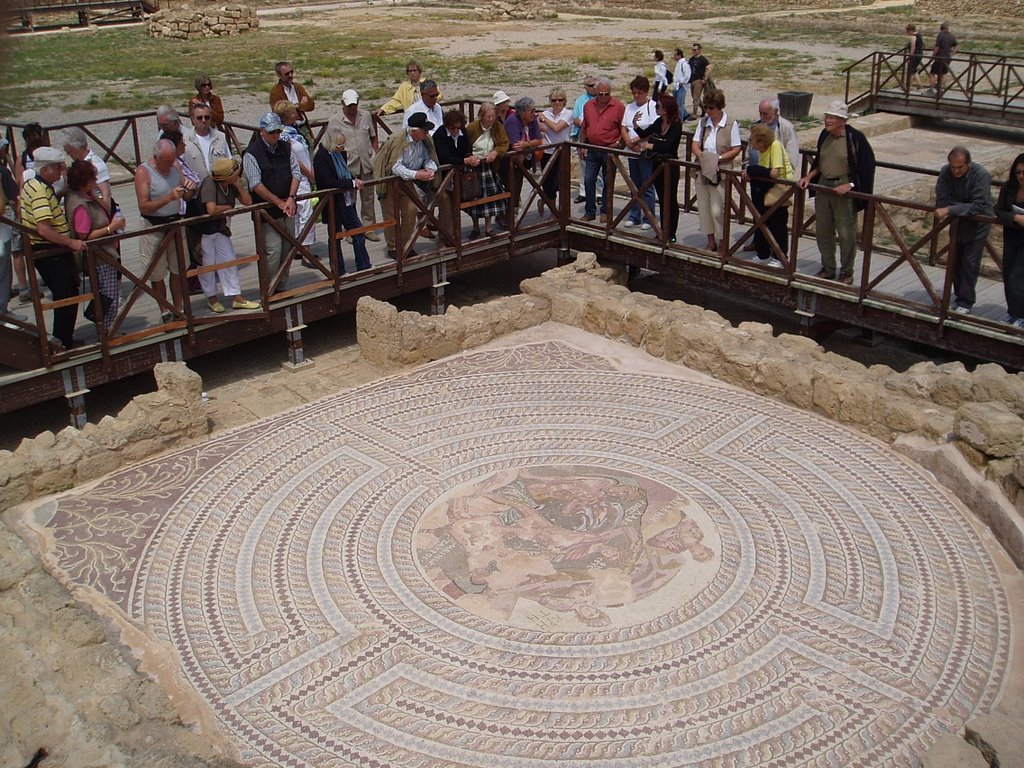
Nea Paphos and the Mosaics
Nea Pafos is situated on a small promontory on the southwest coast of the island. According to written sources, the town was founded at the end of the 4th century by Nicocles, the last king of Palaipafos. At the beginning of the 3rd century B.C. when Cyprus became part of the Ptolemaic kingdom, which had its capital in Alexandria, Nea Pafos became the centre of Ptolemaic administration on the island. Until the end of the 2nd century B.C., Nea Pafos acquired such an important role as a political and economic centre of the region that the Ptolemies made it the capital of the whole island. When, in 58 B.C., Cyprus was annexed by Rome, Nea Pafos continued to be the capital of Cyprus. Only after the disastrous earthquakes of the 4th century A.D. was the capital transferred to Salamis, which was then renamed Constantia. Even then however, Nea Pafos dominated the other cities of Cyprus. After the Arab raids of the middle of the 7th century, Nea Pafos went through a period of decline, which lasted a few centuries, and was thus reduced in size. The town regained some of its importance during the Byzantine and the Medieval periods but from the Venetian period onwards the coastal settlement of Nea Pafos was abandoned and the population began to move further inland to where the present town of Pafos (Ktima) developed. In 1962 the Department of Antiquities began systematic excavations at Nea Pafos, during which many of the ancient townʼs administrative buildings, as well as private houses and ecclesiastical buildings, came to light. Nea Pafos has also been the centre of excavations and research by many foreign archaeological missions from Universities and Schools from all over Europe, America and Australia. In 1980 Nea Pafos and Palaipafos were added to UNESCOʼs World Heritage List.Paphos Castle
The castle of Paphos (Pafos Castle), located at the harbour of the city, was a part of the coastal defence system of Cyprus. It was originally built as a Byzantine fort to protect the harbour and was rebuilt by the Lusignians in the thirteenth century. It was then dismantled in 1570 by the Venetians, who found themselves unable to defend it against the Ottomans, who in their turn restored and strengthened it after they captured the island. The rescued part of the building is one of the two towers built by the Lusignians after the earthquake in 1223 A.D. One of the two towers was deserted and an earthquake destroyed it. 50 metres to the east you can see the remains of the second tower. After its destruction, the fort was rebuilt by the Ottomans in 159 A.D., as you can see from the sign placed at the entrance of the fort. The ground floor of the castle is composed of various rooms, which were used as prison cells by the Ottomans. Below the floor there are two small underground cells, in where long-term convicts were held. The first floor was used as a mosque, and the rest of the rooms were used for the small Ottoman guard. On the roof of the castle there were some cannons, which were removed at the end of the Ottoman command in 1878. During the English command the castle was used for salt storage until 1935, when it was declared an ancient monument. Paphos castle is a part of the UNESCO list of cultural monuments.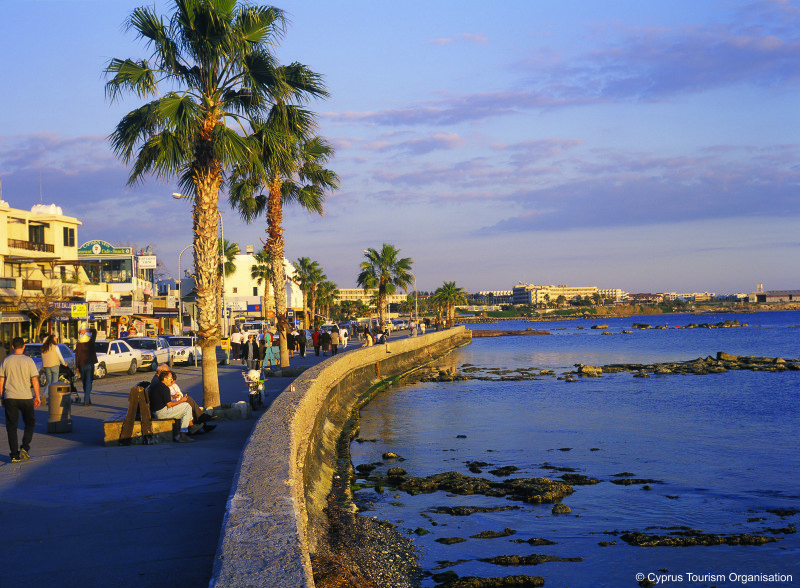
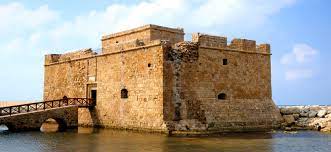
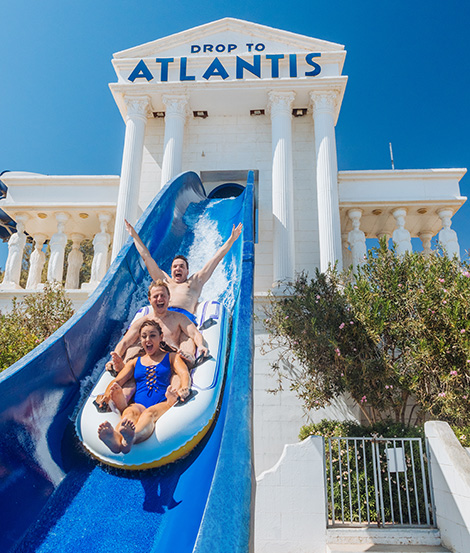
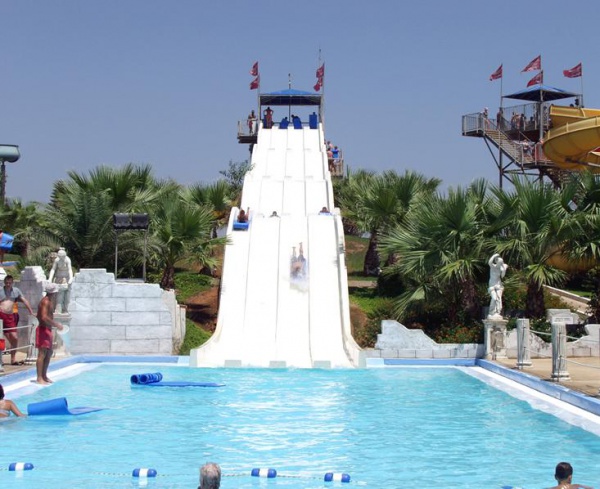
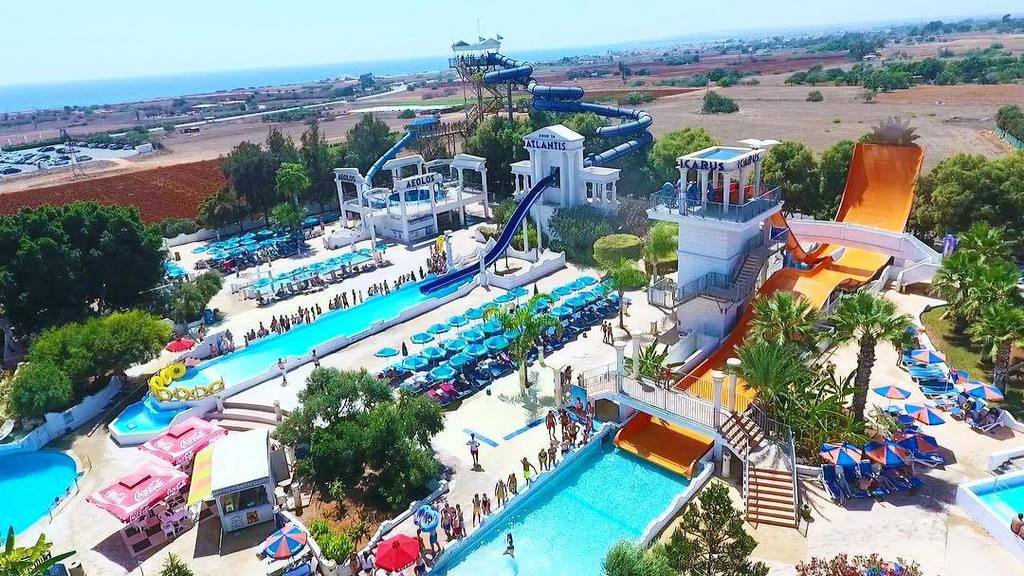
FULL-DAY EXCURSION – WATERWORLD WATERPARK
Waterworld Waterpark is one of the biggest themed waterparks in the whole of Europe – an impressive feat to say the least. You can spend the whole day here without getting bored, with more than 25 waterslides and attractions to enjoy! From the mighty Serpentine Slides and the Fun Chariot Chase, to The Fall of Icarus and The Quest of Hercules, there is heaps to enjoy! It has won heaps of awards, rated one of the best waterparks in Europe! It was rated number 2 among the best waterparks of Europe – ranked by TripAdvisor – and came in at number 14 in the world. That is not to forget that the park has received 25 International awards of excellence for marketing and innovation from the WWA – World Waterpark Association and IAAPA – International Association of Amusement Parks and Attractions in the U.S. WaterWorld also won the Trip Advisor Travellersʼ Choice Attractions Award 2014 and The Trip Advisor Certificate of Excellence 2015. And it received worldwide acclaim when it was featured by CNN as one of the worldʼs top 12 waterparks. Popsugar has also rated it as one of the ʻ5 Wildest Waterparks around the Worldʼ and the list goes on! It is a safe environment for the whole family. With over 100 lifeguards keeping a close watch over the rides, games and pool areas, there is always someone to ensure help is at hand in case of any accident. The water quality is also checked on a daily basis, while the staff are also happy to provide any assistance needed You can expect all day entertainment steeped in Greek mythology. Waterworld has introduced an amazing programme of in-house entertainment, including childrenʼs games, dance aerobics and the fabulous Greek-themed acrobatic show! All this, in a setting that has been carefully planned over the years, with the whole park filled with Greek columns, fountains, plazas and statues of all the Greek Gods.
HALF-DAY EXCURSION – AYIA NAPA
Ayia Napa
Ayia Napa, the tourist paradise of Cyprus, with its lovely golden beaches, clear sea waters, wonderful dreamy nights and its pleasant and warm-hearted inhabitants has maintained a simplicity of life which is in full accord with the historic traditions of Cyprus. Geographically, Ayia Napa is situated near Cape Greco, just south of Famagusta, and forms part of a larger area known by the name of Kokkinochoria (a name derived from the red colour of its soil). Before it developed into a cosmopolitan tourist centre, Ayia Napa was a purely agricultural village. Today, despite its enormous development, its people still find time to engage in their old occupations, namely farming and fishing. The innate simplicity of the Ayia Napa people has not died with the passage of time. In spite of the enormous tourist development, an intense community spirit and mutual understanding characterises these people, a spirit which is reflected in their attribute towards foreign visitors. The locals here are genial, outgoing and hospitable. From the very first moment, the visitor to Ayia Napa feels a sense of belonging, at home in this welcoming environment. Here, Cypriot hospitality is an accepted part of everyday life.The Monastery and the square
The absolute focal point of Napa is the square, where at evenings literally thousands of people gather for serious drinking and posing. Try one of the roof top bars for a great people watch. The action is wild and the atmosphere is humming. During the daytime, however, when the bars are closed and the garage music is silenced for a few hours, the transformation is amazing. Well worth a visit since there you can also find the 15th century Venetian monastery, a church built on a cave where an icon of Virgin Mary was found. The cute little story (isn’t there always one of these?) is that a hunter with his dog were chasing a hare which mysteriously disappeared. The dog hot on the chase continued the search and discovered a cave. When eventually the hunter managed to enter the cave he was stunned to discover an icon of Virgin Mary flooding with light. This cave is now the old monastery of Ayia Napa and the icon still remains there to this day. Maybe this tale puts added meaning to the saying ‘let the dog see the rabbit’. Undoubtedly this is the most important cultural experience Ayia Napa has to offer. In later years a stone aqueduct was built in order to bring water to the sacred place from a natural spring found 2km into the hills of Napa. This water still runs from a marble fountain shaped like the head of a wild bear and is offered to pilgrims as holy water. Finally, due to the increase in local population the new church of Ayia Napa was completed in 1990. The interior of this church is magnificent covered with Byzantine style icons. Admittedly it does not match the style and atmosphere of the old monastery, still worth a visit. Funnily enough and against the popular belief, the square is definitely the spot for a few holiday snaps even if only to show mum that you did stay sober for a couple of hours a day.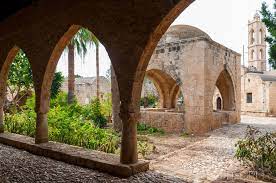
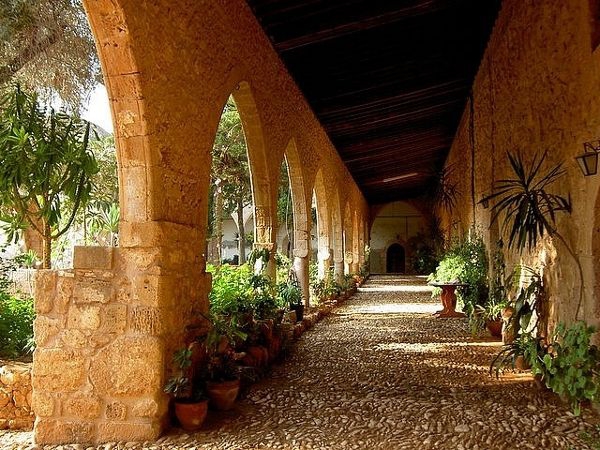
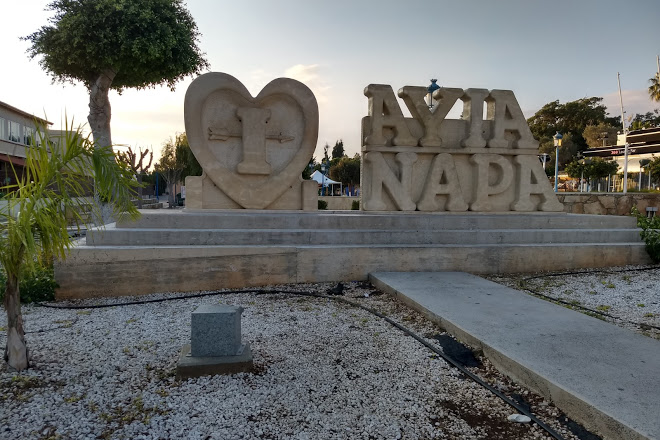
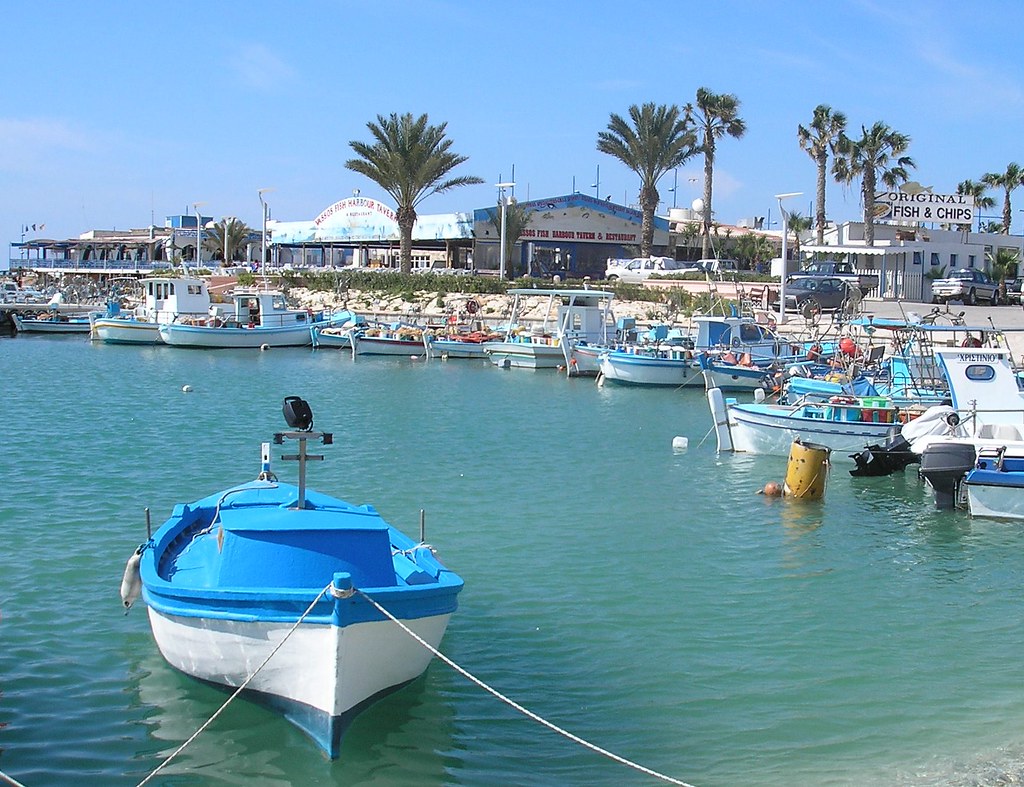
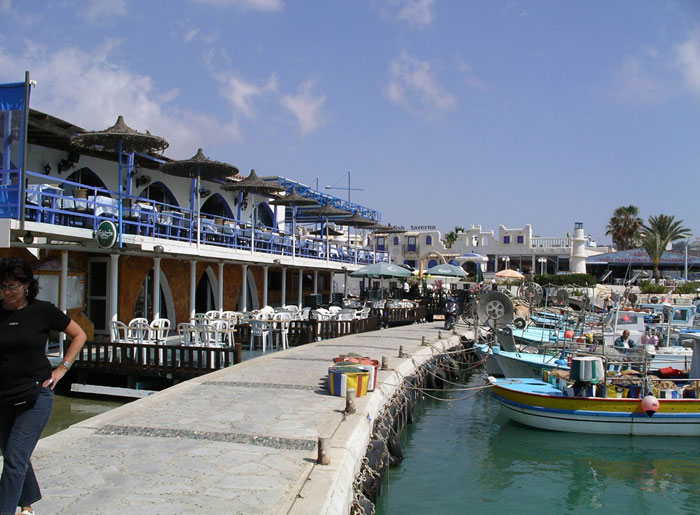
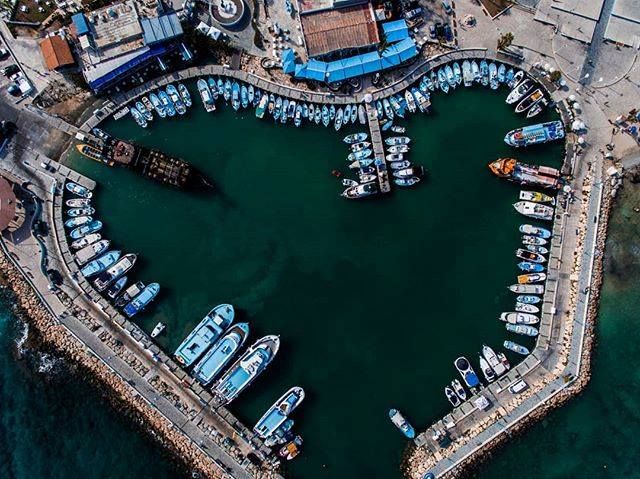
Ayia Napa Harbour
Ayia Napa has not always been a crazy holiday spot. Only a couple of decades ago, Napa was a tiny fishing village clustered around an ancient monastery and the harbour was the most important asset for the local population. During the last few years the harbour with its surrounding area was partly altered and redesigned aiming at re-establishing it as the landmark of Ayia Napa and giving it back the importance it enjoyed in the past. Today the harbour is a bustling area where the local fishermen dock around 8am selling their catch. Be warned, great fish but not cheap. From early in the morning the cruise boats depart and what a choice! A romantic morning cruising the coastline, ‘drink all you can’ party boats, game fishing and even the yellow submarine. The choice is vast if you fancy a day on the sea. At night, for an evening of peaceful dining with great views, the harbour has a good choice of restaurants where surprise fish is the sociality! For an evening away from the hustle & bustle and a bit of romance this is quite the place.Thalassa, Municipal Museum of the Sea
Thalassa, the Municipal Museum of the Sea in Ayia Napa, was created in collaboration with the Pierides Foundation, in order to embody the link between Cyprus and the sea, which has had a tremendous impact upon the development of the indigenous civilization from prehistoric times to the present. Located in the centre of Ayia Napa, the Museum, with its multi-purpose design, serves to display sea artefacts; host symposia, corporate events, concerts and travelling art exhibitions and to conduct a variety of entertaining, scholarly and educational programmes in which audiences can actively participate. The main display of the Museum, is the “Kerynia II”, a life-size replica of the ancient ship “Kerynia”. The “Kerynia Ship” is a Mediterranean trading ship, which was built in the early 4th century B.C. and is the oldest Greek vessel ever discovered. Andreas Kariolou, who was looking for sponges, accidentally discovered it in 30-meter-deep waters off the coast near the town of Kerynia on Cyprus in 1967. Among the cargo recovered were approximately 400 amphorae for transporting wine and olive oil and for the storage of almonds. Another attraction of the Museum is an exact replica of a Mesolithic (9200 B.C.) papyrus raft, which was used in antiquity to transport obsidian from the Greek islands to the mainland. The location also houses a varied collection of statues, idols and vases covering the different historical periods of Cyprus (9000 B.C. to 1878 A.D.). Besides the historical exhibits, there are sculptures, engravings, ceramics and paintings of seascapes made by some of the greatest 19th and 20th century Greek and Cypriot artists. In addition, displays include audio-visual panels, models and interactive exhibits. An attractively designed cafeteria, a museum shop, an open air amphitheatre and two exhibition halls for periodic shows and seminars supplement this very contemporary museum complex in the seaside resort of Ayia Napa.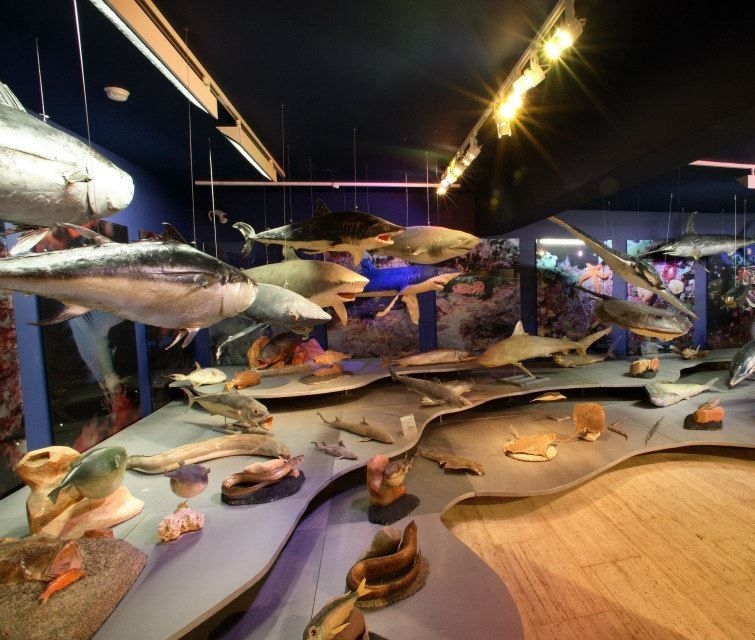
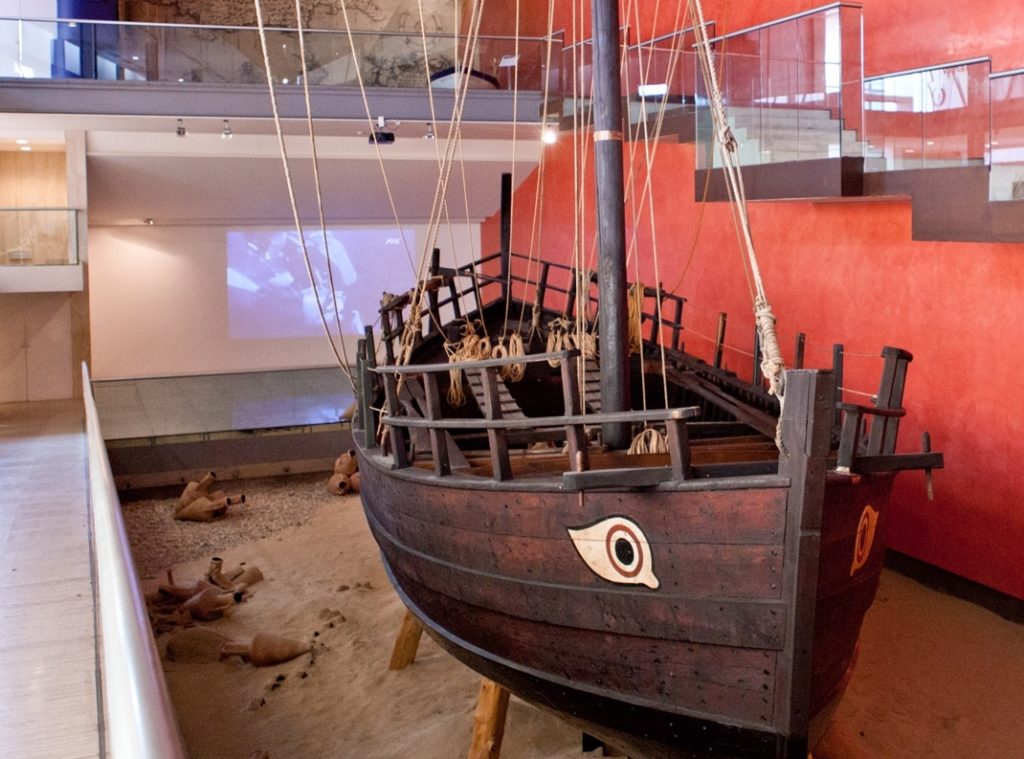
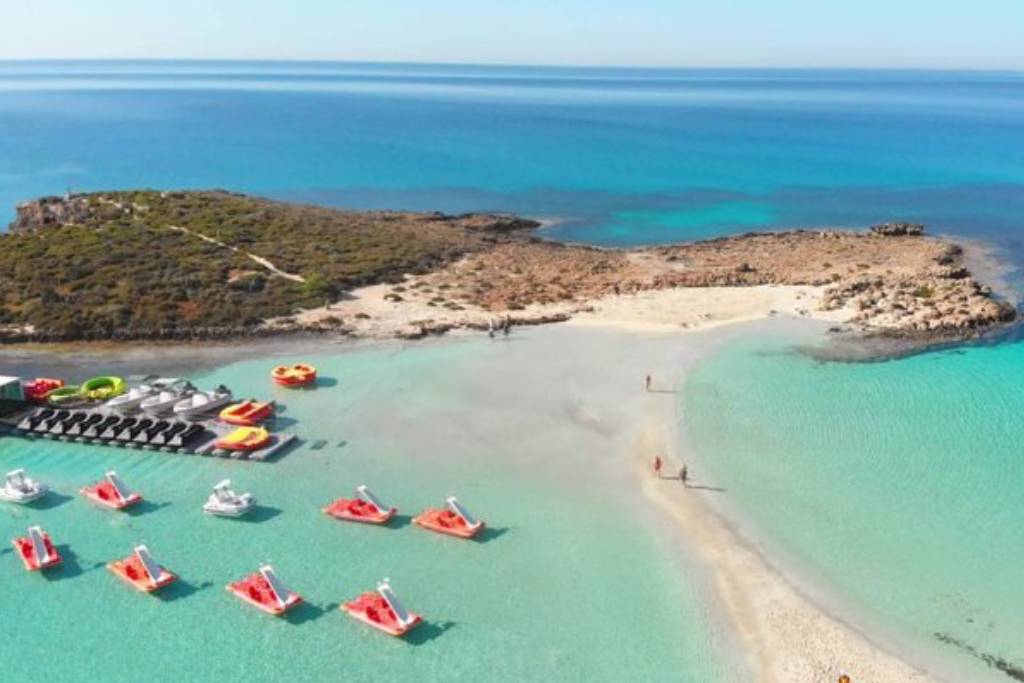
Nissi Beach
Nissi Beach is only three kilometres west of Ayia Napa. These closely connected twin beaches attract thousands of tourists every year. Nissi, which in Greek means a small island, gives a new dimension to the beauty of the landscape. It is well sheltered from the winds which facilitate all sea sports. There are also cafeterias, pubs, and restaurants in the area.Parko Paliatso Luna Park
Parko Paliatso Luna Park is located in Ayia Napa and offers fun and excitement to people of all ages. It is the largest Luna Park in Cyprus on 30,000 square metres of land. The Luna Park has over 25 rides. The biggest and most popular attraction in the park is the sling shot which is the highest seat ejaculation in Europe. In 2010 the Luna Park also acquired a 45 metre Giant wheel. The rides are categorised into extreme, family extreme, family and kiddie rides to suit the whole family. Transfer and entrance to the Luna Park is included. Students pay for the rides.